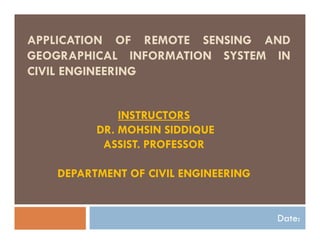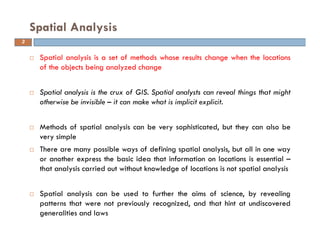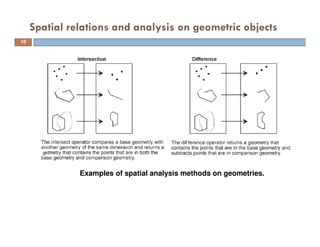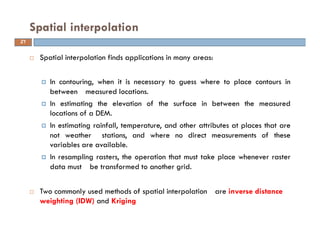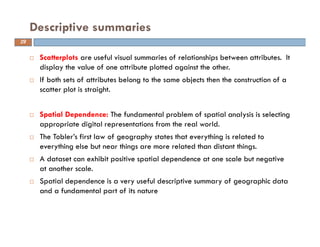Remote sensing and GIS can be applied in civil engineering for spatial analysis and to answer geographic queries. Spatial analysis examines how the locations of objects impact analysis results and can reveal patterns. GIS uses methods like overlay, proximity, density, and network analysis to study spatial relationships. Common analyses include measuring distances, areas and shapes, transforming datasets, descriptive summaries of data, and optimizing locations.
